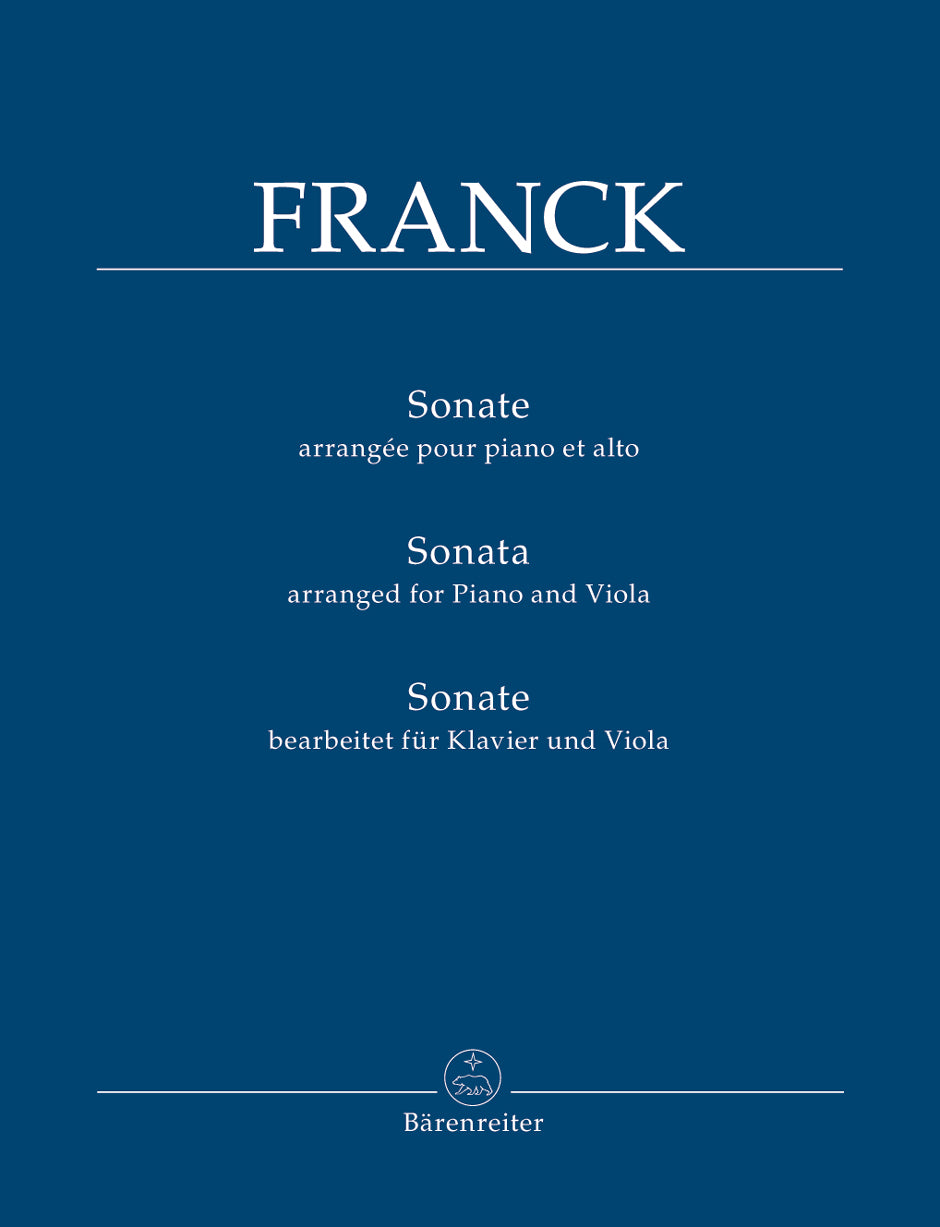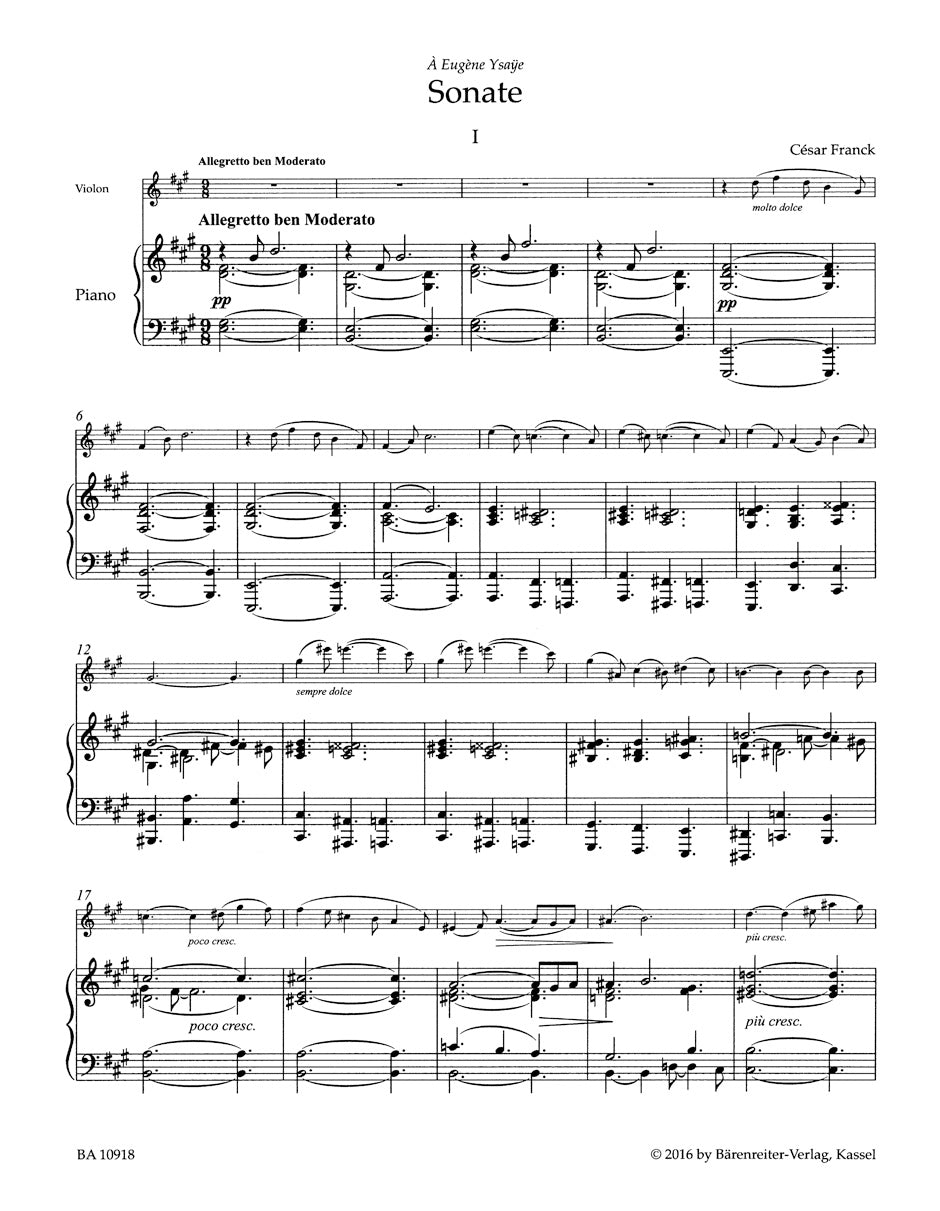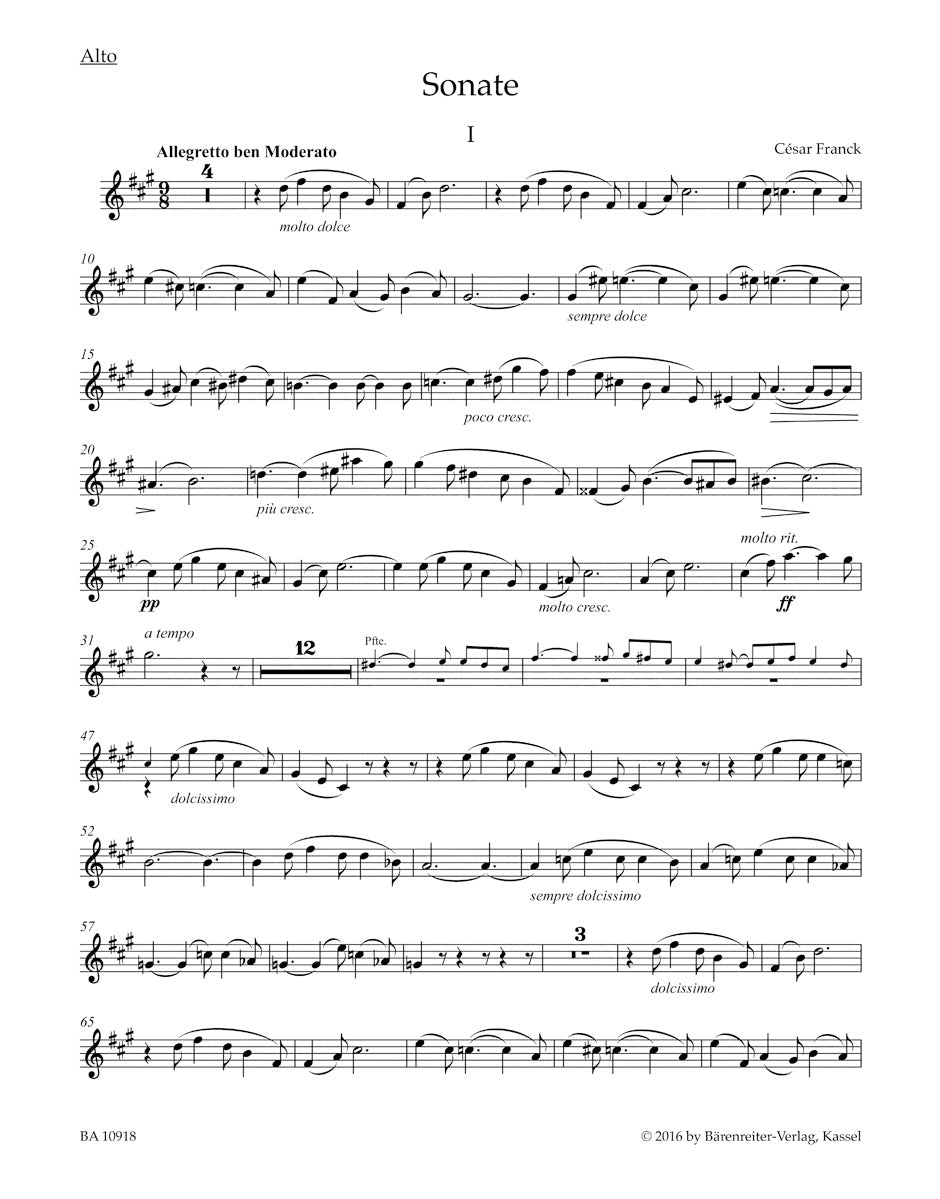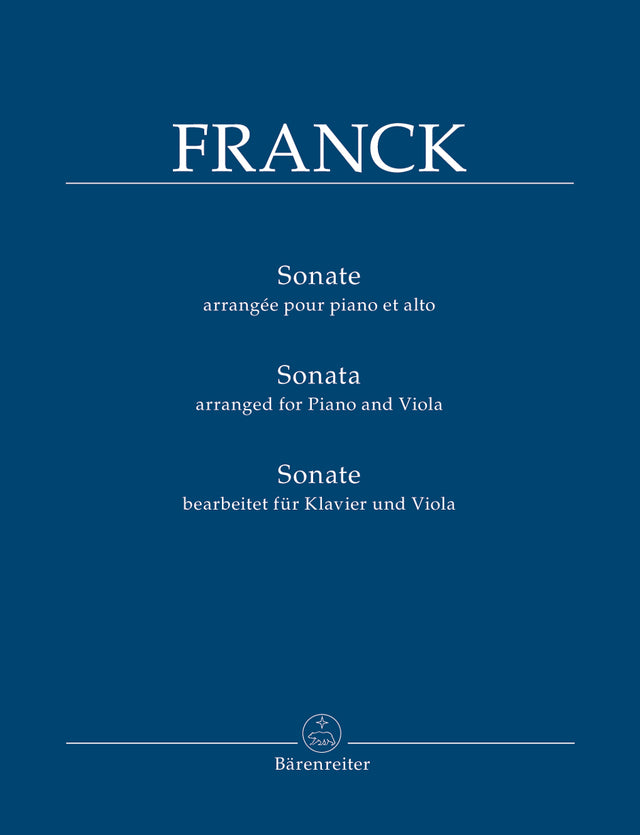Franck: Violin Sonata (arr. for viola)
In stock and typically ships within 1 business day.
- Composer: César Franck (1822-1890)
- Editor: Douglas Woodfull-Harris
- Arranger: Douglas Woodfull-Harris
- Instrumentation (this edition): Piano, Viola
- Originally for: Piano, Violin
- Work: Violin Sonata in A Major, CFF 123, FWV 8
- ISMN:
- Size: 9.6 x 12.2 inches
Description
Cesar Franck's Sonata for Piano and Violin is one of the most treasured works in the violin repertoire, a masterpiece of cyclic form with a gracefulness and expressive force almost paradigmatic for the age of musical Romanticism. This work was composed in 1886 and was dedicated to the Belgian violinist and composer Eugène Ysaÿe.
After Franck's death in 1890 the original publisher of the Sonata, the Parisian house Julien Hamelle, announced an arrangement of the work for viola, but it has not been possible to locate any copy of this publication. The present arrangement for viola is largely based on Jules Delsarts arrangement for piano and cello, the only version of the Sonata which the composer authorized. However, the viola part here also adopts extensive passages in their original register or remains in the middle octave, especially in those passages where the cello lies two octaves beneath the violin.
Being set in the alto register, the part thus lies between the other two string versions, lending the Sonata a delightful hybrid hue beyond the brilliance of the violin and the sonorousness of the cello. The piano part has been left intact and is thus identical to that of the original version.
Publishers use a lot of words to describe what they sell, and we know it can be confusing. We've tried to be as clear as possible to make sure you get exactly what you are looking for. Below are descriptions of the terms that we use to describe the various formats that music often comes in.
Choral Score
A score for vocalists that only contains the vocal lines. The instrumental parts are not there for reference. Generally, cheaper than a vocal score and requires multiple copies for purchase.
Facsimile
Reproductions of the original hand-written scores from the composer.
Full Score
For ensemble music, this indicates that the edition contains all parts on a single system (there are not separate parts for each player). In larger ensembles, this is for the conductor.
Hardcover
Hardbound. Generally either linen-covered or half-leather.
Orchestral Parts
Similar to a wind set, this is a collection of parts. In the case of strings, the numbers listed are the number of copies included, though generally these are available individually (often with minimum quantities required).
Paperback
When publishers offer multiple bindings (e.g. hardcover) or study scores, this is the "standard" version. If you're planning to play the music, this is probably what you want.
Performance / Playing Score
A score of the music containing all parts on one system, intended for players to share. There are not separate parts for each player.
Set of Parts
For ensemble music, this indicates that there are separate individual parts for each player.
Solo Part with Piano Reduction
For solo pieces with orchestra, this is a version that contains a piano reduction of the orchestra parts. For piano pieces, two copies are typically needed for performance.
Study Score
A small (think choral size) copy of the complete score meant for studying, and not playing. They make great add-ons when learning concertos and small chamber works.
Vocal Score
A score prepared for vocalists that includes the piano/organ part or a reduction of the instrumental parts.
Wind Set
For orchestral music, this is a collection of wind and percussion parts. The specific quantities of each instrument are notated.
With Audio
In addition to the printed music, the edition contains recordings of the pieces. This may be an included CD, or access to files on the internet.
With / Without Fingering (Markings)
Some publishers prepare two copies - a pure Urtext edition that includes no fingering (or bowing) suggestions and a lightly edited version that includes a minimal number of editorial markings.





